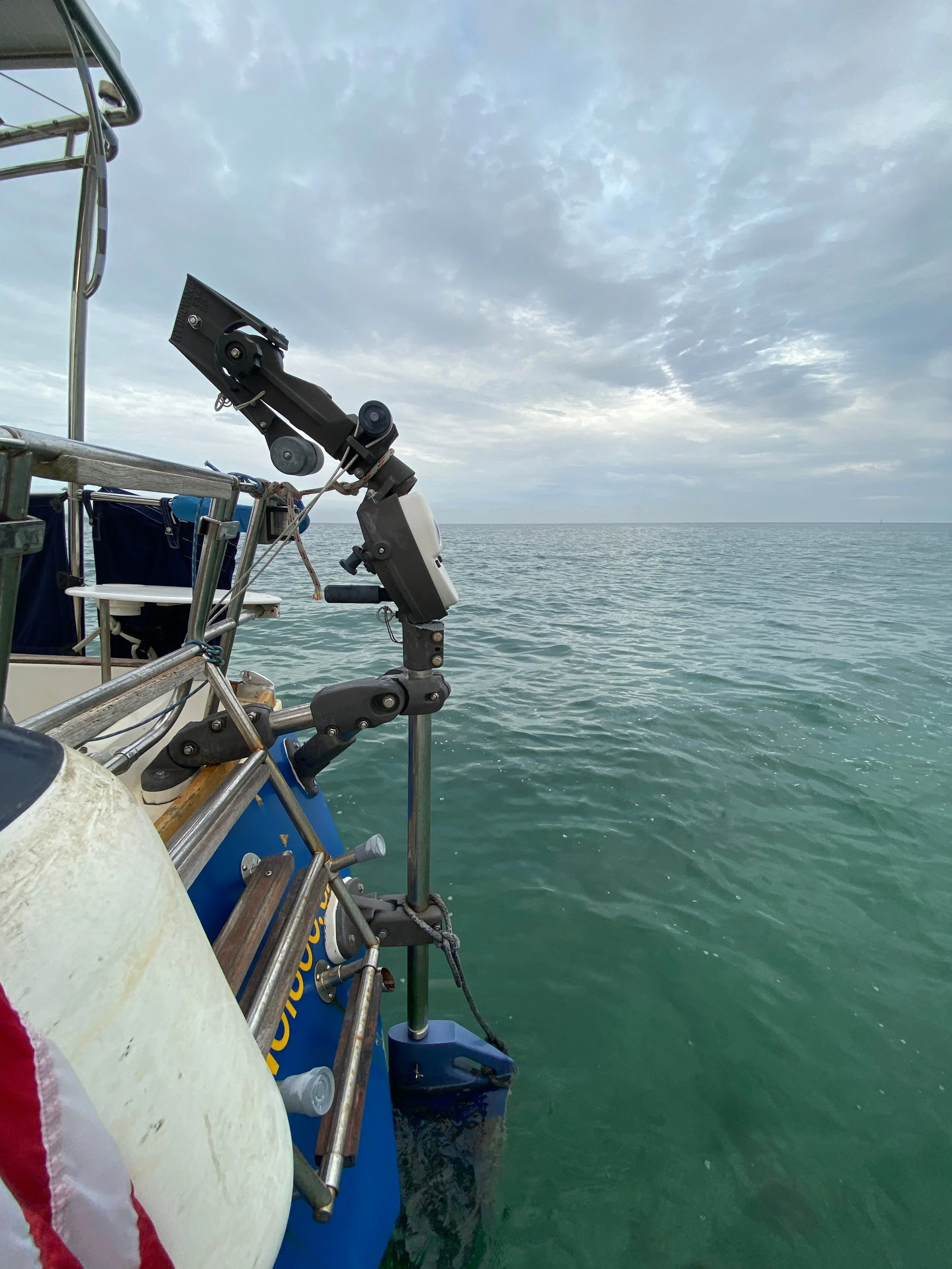This post was originally shared exclusively and directly with our subscribers during our passage across the Tasman.
We sailors are a superstitious lot.
You may have noticed that I never say “after we make landfall…,” or, “when we arrive to Australia…” That’s because the completion of a voyage is never guaranteed, and I choose not to tempt fate. The ocean gives us so much, but can also take it all away. We are so very small and the sea is vast and powerful. We are but guests here. Until the anchor is down and set, I live in the realm of the unknown, with a constant mild undercurrent of fear and anxiety.
But, hopefully, tonight will be our last full night at sea on this voyage.
We are now less than 100nm from the northern tip of Breaksea Spit beyond the top of Fraser Island, which is where we will turn and bear southwest toward the entrance to Port Bundaberg.
This means we are well into what I think of as the “marathon at the end of the marathon” — the last 200nm of a passage. Similar to this stretch of mileage at the start, we are exposed to all the hazards of near-shore sailing: increased shipping traffic, a higher likelihood of poorly-lit or questionably-managed non-professional vessels, and land-altered winds and seas. Last night alone I had more than ten AIS alarms sound for nearby traffic; typically, I might see one every 48 hours or more. This close to land, I must keep a more persistent look-out, so I set alarms to limit my sleep to naps of 30 minutes or less.
I’m a big believer in the philosophy that there is no one right way to do this kind of sailing. However, most of the single-handed sailors that I know share a similar strategy: we aim to transit the first and last 200nm of a passage as quickly as possible, because we know that we cannot subject our bodies to such deprivation for long. Were this to drag on for more than 48 hours, the perspicacity of our decisions would suffer, and in turn, so would our safety.
When I left on my first solo ocean passage, one of my singlehander mentors asked me, “what is the most important system on the ship?” I thought he meant the autopilot, but he quickly corrected me. “It’s you.”
Above all else, without the benefit of a crew to share watches, make hot drinks, ensure you are well fed and hydrated, you must do it all for yourself. And you simply can’t care for yourself as well during this stretch of time. Even with just one other crew member, a skipper could make the decision to slow down and transit these waters more comfortably, sailing a longer course to avoid unpleasant conditions or angles of sail.
I need my sleep, so for me the safest choice is clear — keep the boat moving as fast as possible so we can put the anchor down and rest as soon as possible.
Aside from decreased sleep, the sailing also tends to be trickier and more demanding close to shore. Since mid-morning today, we’ve been fighting our way through headwinds and uncomfortable seas. Even now, they persist, but in the middle of the night, the wind will abruptly shift with the arrival of a southerly front. This will make for even sloppier seas since it’s such a big change in weather direction, and the front also brings higher winds and strong and sudden gusts. I’ll need to quickly reef, then unreef, furl, then unfurl, trim the sails and then ease the lines. While it will be a more comfortable wind angle than today’s sail, it will be nonstop.
If all goes to plan, then we should be making the turn at the tip of the spit in the late afternoon, perfectly aligned with the more favorable tidal current, and with the advantage of daylight. Then, we’ll sail another eight hours or so, arriving to Bundaberg between midnight and eight in the morning on Sunday. I normally don’t like to enter an unfamiliar port in the dark, but I spoke with another sailing couple who made the passage a few months ago, and they said the entrance channel is very clearly lit and simple to navigate (the charts certainly show it to be so).
So, while I’m too superstitious to say anything about our landfall with certainty, I am very hopeful that tonight will be our last full night at sea. Come on, Australia!
By the way, don’t forget to check out our other tracker for shorter and more timely text-message-type updates. I will post there tonight and tomorrow as we track toward our destination.
Sorry for the length and meandering of this post, but I’m too tired to edit, the boat motion is nausea-inducing, and an AIS alarm is about to sound for a beacon in my vicinity! Wish us luck tonight and tomorrow, and thanks a million for all the love and support!

